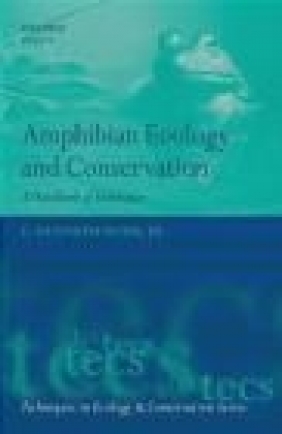Amphibian Ecology and Conservation
C Kenneth Dodd
Amphibian Ecology and Conservation
C Kenneth Dodd
- Producent: Oxford University Press
- Rok produkcji: 2009
- ISBN: 9780199541188
- Ilość stron: 588
- Oprawa: Twarda
Niedostępna
Opis: Amphibian Ecology and Conservation - C Kenneth Dodd
This practical manual of amphibian ecology and conservation brings together a distinguished, international group of amphibian researchers to provide a state-of-the-art review of the many new and exciting techniques used to study amphibians and to track their conservation status and population trends. The integration of ecology and conservation is a natural outcome of the types of questions posed by these disciplines: how amphibians can and should be sampled, marked, and followed through time; how abundance and population trends are measured; what are the robust statistical methods that can be used in ecology and conservation; what roles do amphibians play in community structure and function; how do animals function in their environment; and what affects the long-term persistence of species assemblages? Although emphasizing field ecology, sections on physiological ecology, genetics, landscape ecology, and disease analysis are also included. The book describes the latest statistical approaches in amphibian field ecology and conservation, as well as the use of models in interpreting field research. Much of this information is scattered in the scientific literature or not readily available, and the intention is to provide an affordable, comprehensive synthesis for use by graduate students, researchers, and practising conservationists worldwide. The book is far more than a cookbook or field guide. It is a synthesis. I hope my fellow amphibian ecologists (and discerning ecologists specializing in other taxa and systems) will join me in thanking the many folks who made this handbook a reality; we, our students, and proteges will benefit for years to come. Bulletin of the Canadian Association of Herpetologists This handbook is likely to serve as a valuable herpetological reference tool for years to come. Bulletin of the British Ecological SocietyPART 1. INTRODUCTION ; 1. Amphibian diversity and life history ; 2. Setting objectives in field studies ; PART 2. LARVAE ; 3. Morphology of amphibian larvae ; 4. Larval sampling ; 5. Dietary assessments of larval amphibians ; 6. Aquatic mesocosms ; 7. Amphibian water quality ; PART 3. JUVENILES AND ADULTS ; 8. Measuring and marking post-metamorphic amphibians ; 9. Egg mass and nest counts ; 10. Adult diets ; 11. Movement patterns and radiotelemetry ; 12. Field enclosures and terrestrial cages ; PART 4. AMPHIBIAN POPULATIONS ; 13. Drift fences, coverboards and other traps ; 14. Area-based surveys ; 15. Rapid assessments of amphibian diversity ; 16. Auditory monitoring of anuran populations ; 17. Measuring habitat ; PART 5. AMPHIBIAN COMMUNITIES ; 18. Diversity and similarity ; 19. Landscape ecology and GIS methods ; PART 6. PHYSIOLOGICAL ECOLOGY AND GENETICS ; 20. Physiological ecology: methods and field perspective ; 21. Models in field studies of temperature and moisture ; 22. Genetics in field ecology and conservation ; PART 7. MONITORING, STATUS AND TRENDS ; 23. Selection of species and sampling areas - the importance of inference ; 24. Capture-mark-recapture, removal sampling and occupancy models ; 25. Quantifying abundance: counts, detection probabilities and estimates ; 26. Disease monitoring and biosecurity ; 27. Conservation and management ; Index
Producent:
GPSR Oxford University Press Espana S.A.
Avenida de Castilla, 2
28022 El Parque Empresarial San Fernando de Henares (ES)
tel: 916602600
email: [email protected]
Szczegóły: Amphibian Ecology and Conservation - C Kenneth Dodd
Tytuł: Amphibian Ecology and Conservation
Autor: C Kenneth Dodd
Producent: Oxford University Press
ISBN: 9780199541188
Rok produkcji: 2009
Ilość stron: 588
Oprawa: Twarda
Waga: 1.11 kg






















